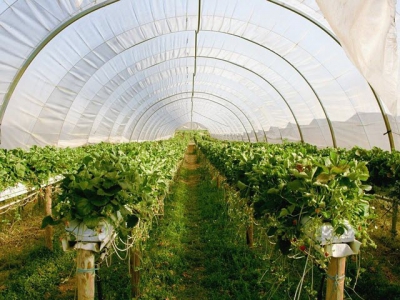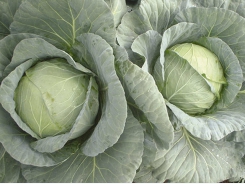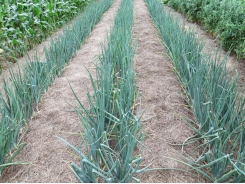Ensuring optimal greenhouse irrigation

Irrigating in the correct quantities and at the right frequency are key to greater production in a hydroponic greenhouse system. Greenhouse specialist Martin von Holdt shared his knowledge on the ideal irrigation strategy with Lindi van Rooyen.
In hydroponic greenhouse cultivation, achieving the optimal irrigation required by specific plants is a balancing act of several crucial factors. These are electric conductivity (EC), oxygen content of the growing medium, vegetative versus generative growth, root growth and root pressure. At the heart of this balance, according to greenhouse specialist Martin von Holdt, is careful monitoring of drain percentage and timing during the day.
“Irrigation is about managing the water content in your growth medium, and can be compared to getting as much water into a sponge as possible,” he explains. “A sponge retains the most water when the liquid is administered in small doses instead of a large volume at once. Large irrigation doses also produce a false drain and lower the water content in the plant bags.”
The water content must be higher at certain times of the day and lower at others.
“Plant activity and water uptake follows the curve of temperature, humidity and light,” stresses Von Holdt. “The plant requires more water in the middle of the day, and less in the early morning and evening. “It’s easy to keep a plant alive by irrigating it once, or even a few times a day, but you will not have great production figures. In greenhouse production, you need to do more than keep plants alive. To get your crop to its genetic potential, you need the right climate, cultivation and irrigation strategy.” An ideal strategy incorporates three irrigation phases in the day.
Phase one
Known as the top-up phase, this takes place about two hours after sunrise. Irrigating earlier than this should be avoided, as the plants need to become active before irrigation in order to stimulate root growth. Von Holdt advises that each plant be given 150ml of water three times over two hours – a total of 450ml. The first and second cycle should not produce any drainage, as the medium should be dry enough to absorb all the water. Drainage should emerge only after the third cycle.
The volume of drainage is not important. All that matters is that it takes place, indicating that the medium is now saturated.
Phase two
This is the EC management phase, which will ensure that the plants receive the nutrients they need to flourish. The high water content carried over from phase one must be maintained as this will keep the EC stable and prevent salt build-up. It will also prevent wilting and blossom-end rot. Much more water is used in phase two, but it is administered in small doses of a maximum of 100ml per cycle. This is necessary to keep the bag full of water, creating a sponge effect.
Von Holdt suggests that on a typical hot sunny day, tomatoes be given five irrigation cycles of 100ml per hour (ie, 500ml per hour), peppers four cycles of 100ml per hour (400ml per hour) and cucumbers six cycles of 100ml (600ml per hour). “The frequency of irrigation is determined by the rate at which plants take up the water,” he explains. “This is monitored by observing whether there is any drainage after each irrigation cycle. If there’s no drainage from a 100ml dose, the delay after the last irrigation cycle was too long. If there’s too much drainage, it was too short. Change the frequency of irrigation, not the duration, and keep it at 100ml of water per cycle.”
According to Von Holdt, the drain should be low to reduce wastage, but there should be enough to maintain a stable EC, as it is the drain percentage that controls the EC in the bags. “If the EC is climbing, increase the drain percentage a little by increasing frequency of irrigation until you can maintain a stable EC,” he explains. “Don’t be tempted to dose a large volume of water to ‘flush’ the salts out; it doesn’t work. This is simply a false drain – the water runs down the inside of the plastic bag and doesn’t actually pass through the growth medium. You’ll have achieved nothing.”
Phase three
This is the drying out phase, which will ensure that the growth medium loses 10% to 15% of its water content by nightfall. Irrigation must be stopped early enough to allow drying out to take place. This could mean halting irrigation as much as two hours before sunset in summer and four hours before sunset in winter. The first drain the next morning will indicate whether there was too much or too little drying out (see phase one). “Drying out reduces root pressure at night, decreases guttation and keeps leaves dry,” explains Von Holdt. “Fruit quality will increase as a result and the medium will also get a chance to aerate, while vegetative versus generative balance will be maintained.”
Getting the system properly set up
According to Von Holdt, if an irrigation system has too many valves or zones, its capacity to irrigate sufficient volumes of water per hour is compromised. “There are too few minutes available per valve in an hour and you’ll not be able to deliver the 15 minutes of irrigation required per valve per hour, especially with 2l/ hour drippers, which is the industry norm. There should not be more than four valves, and the pump should be powerful enough to irrigate a quarter of the total area at a time.”
Von Holdt emphasises that a grower cannot compensate by over-irrigating early in the morning or late in the afternoon. He also recommends installing a drain monitor. This measures drain water percentage and EC after each irrigation cycle. The monitor feeds this data back to a computer, which adjusts the irrigation cycles accordingly to increase or decrease drain.
“Irrigate according to the needs of your plant, not your own, and you will be rewarded,” he concludes.
Related news
Tools

Phối trộn thức ăn chăn nuôi

Pha dung dịch thủy canh

Định mức cho tôm ăn

Phối trộn phân bón NPK

Xác định tỷ lệ tôm sống

Chuyển đổi đơn vị phân bón

Xác định công suất sục khí

Chuyển đổi đơn vị tôm

Tính diện tích nhà kính

Tính thể tích ao




 Growing Potatoes – New Potatoes for Christmas
Growing Potatoes – New Potatoes for Christmas  Table grape farmer’s success
Table grape farmer’s success